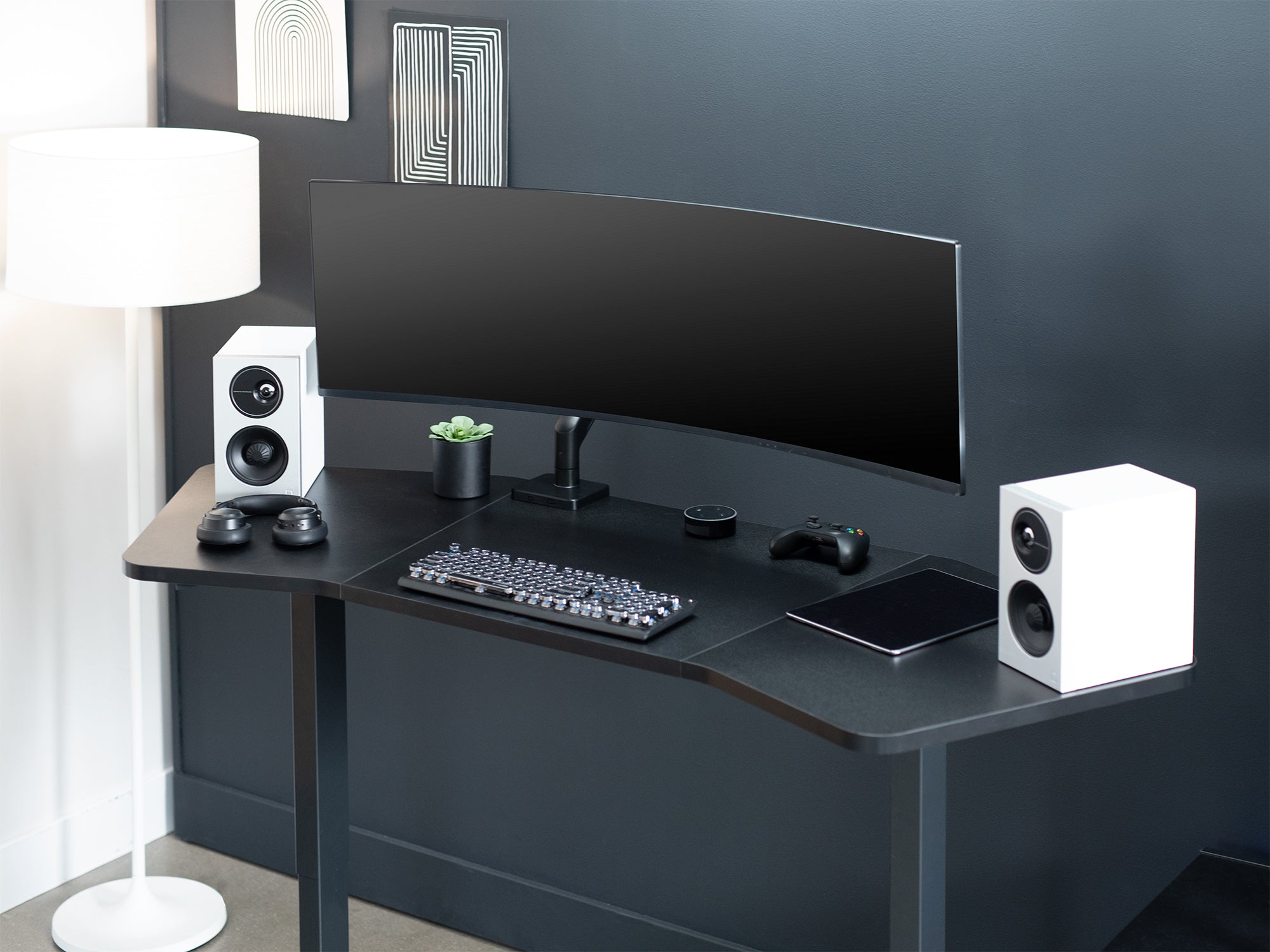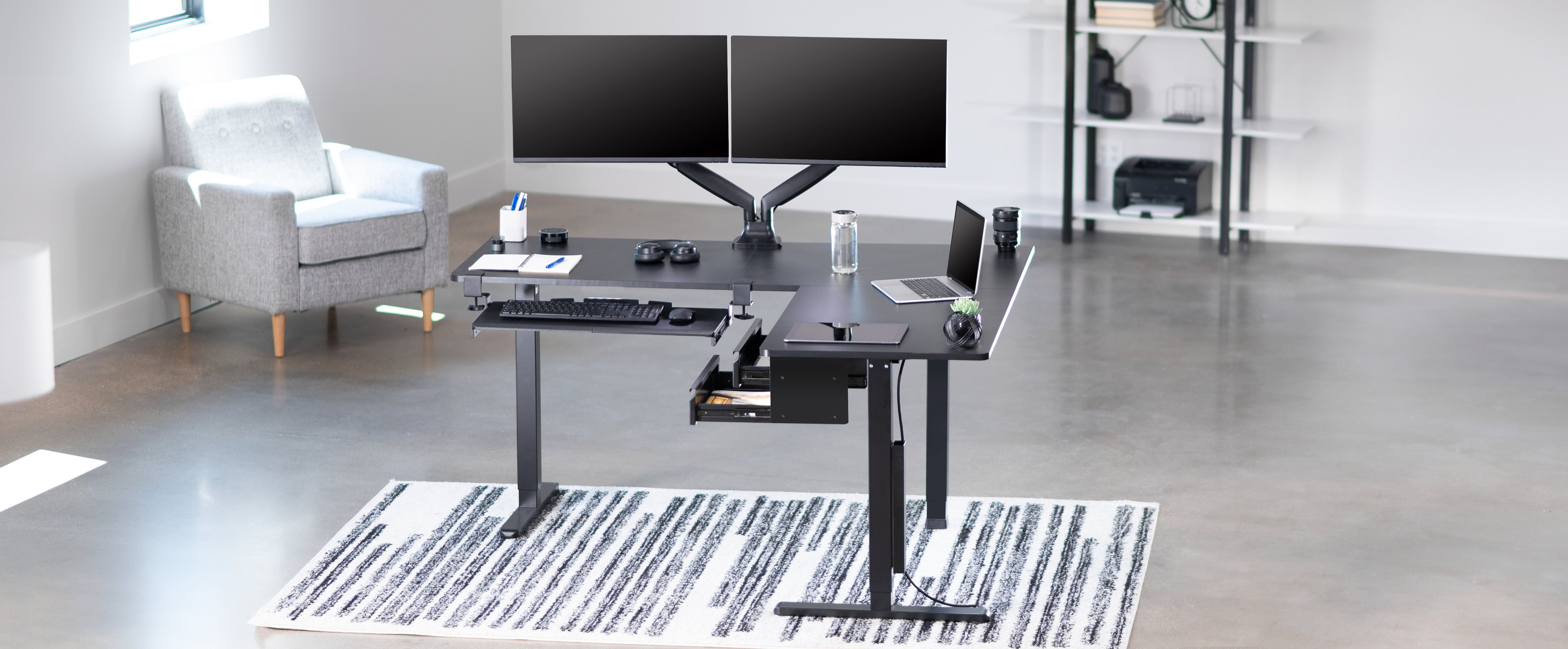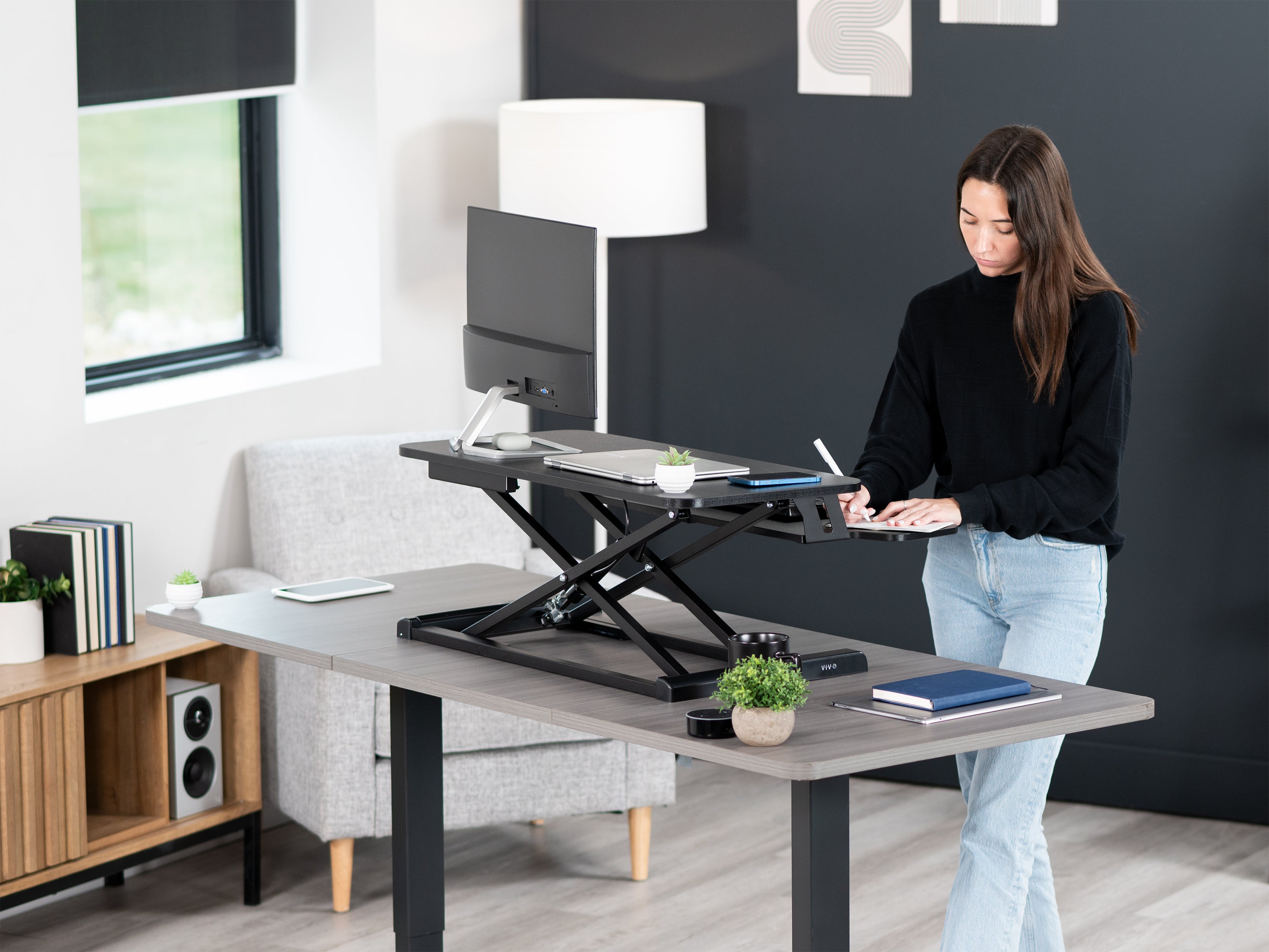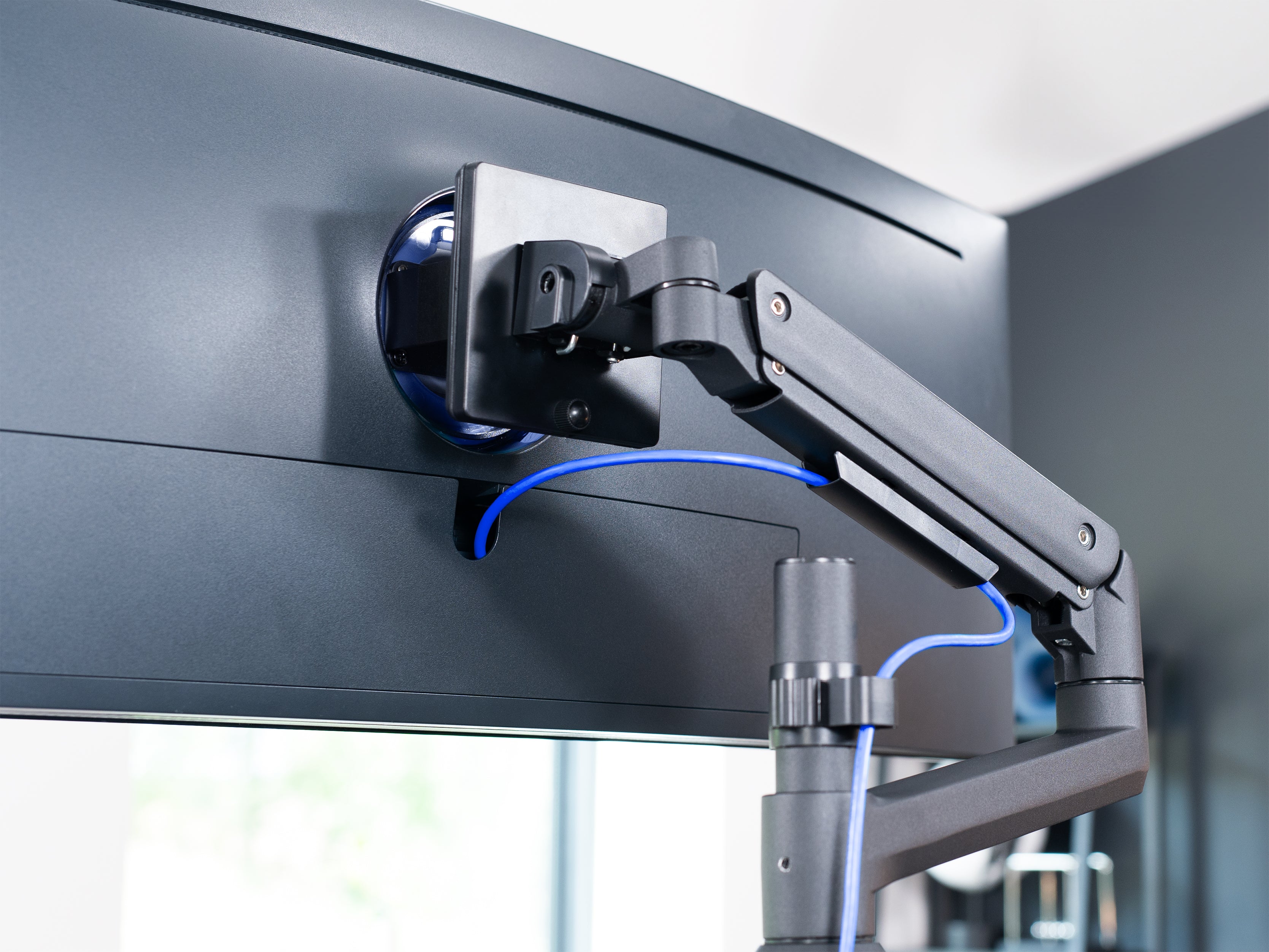Every day, people are posting pictures and videos showing off their brand new and meticulously designed desk setups. Creating a great desk setup is a very difficult, but very rewarding task. If you’re looking at redesigning your desk setup, and don’t know where to start, this post is for you. We’re going to go over two aspects of the design process for you consider as you create your new space: The practical, and the visual.
Practical considerations:
First and foremost, you’ll want your desk to be easy and enjoyable to use: It doesn’t matter if you have the best looking set up in the world if it makes using it something you dread to do.
Workflow: Before you start designing your new desk setup, you should know everything you want to be using the desk for. Is it for late night gaming sessions? Browsing the web? Long hours working on writing and editing documents? A mix of all of these?
In addition to what you’ll be using the computer for, keep in mind other things you use or want to use your desk for. Everything from taking notes to reading books to streaming on Twitch. It might be a good idea to write down everything you do at your desk. You’ll want to keep all these things in mind throughout the desk setup design process so that you can make the design work with you, and not against you.
Cable management: Cable management plays the dual role of making sure you’re not spending your time tripping over and sorting through an endless tangle of wires while also keeping your desk looking clean and tidy. There are many different ways to go about organizing your cables, and what works best will differ from one setup to the next. It’s helpful to have a way to secure your cables under your desktop, but something as simple as zip ties will work in a pinch.
Ergonomics: Another thing to consider when designing your desk setup is ergonomics. If you’re going to be sitting down at your desk for any considerable amount of time, you’ll want it to be set up comfortably and health-minded. It’s a good idea to do research to figure out what ergonomic setup will work best for your needs, but here are a few tips to get you started:
When typing or writing at your desk, your forearms should be parallel to the ground, putting your elbows at a 90-degree angle. This can easily be achieved with an adjustable keyboard tray or a height adjustable desk chair. Your monitor(s) should be positioned so that when you’re sitting up straight, the top of your monitor right at your eye level. This can be done with a monitor mount that allows height adjustment, or just a simple monitor riser.
Organization: It seems obvious, but it’s easy to let this slip under the radar; If you want your desk setup to look it’s best, everything needs a proper place so that it can be put away and you don’t have random odd and ends making your space cluttered.
Make a list of everything you keep on or around your desk and make sure your desk setup has a specific place for all of these items. Put shelving next to your desk, get filing cabinet, or just get rid of things you don’t need. A clean and organized desk space is paramount to having a great looking desk setup.
Now that we’ve talked about the practical things, we can move on to the fun part: designing the visual aesthetic.
Making the desk set up visually appealing
This is the part where you really get to express yourself through the design process.
-
Colors: Choosing a color scheme and sticking with it is the simplest way to give your desk setup a cohesive look.
There’s a lot out there to read on color theory and design and how different colors might affect your emotions, mood, and mindset, but we’re not going to get that in depth here.
The simple tips we can give are these:
- Make sure your colors have consistent scheme: choose 3-5 colors that match, and make everything possible one of those colors. Going a little farther, you can choose one color to be your base color, like white or grey, and then choose one or more colors to be accent colors. This tactic helps to avoid overwhelming the eyes.
- Choose colors you like: you’re the one who’s going to be looking at them all day. Instead of choosing colors based on what looks trendy or because they’re what your favourite YouTuber uses, choose colors you know you’ll like.
- Choose colors that match what you already have: Sometimes painting the room is out of the question, or you have a desk you already want to use. If something like this is the case, you can use these as a jumping off point and build a color scheme around these things.
-
Lighting is perhaps the most overlooked element when it comes to designing visually appealing desk setups. And we’re not talking about the RGB lights on your peripherals. Lighting helps to bring out depth and color in your setup in a very fine tuned way. Alternatively, bad lighting can make even the best setups look flat and dull. There’s two aspects of lighting we’re going to touch on here: Color and placement.
Standard light bulbs have their color measured in temperature, which is usually printed on the packaging. Warmer temperatures will give a more orange tone, and cooler temperatures will give a bluer tone. Try to have a consistent temperature across all of your lightbulbs, and make sure it works well with your chosen color scheme.
Where you place your lights is also important: You’ll want them set up so they’re not casting any harsh shadows where you don’t want them, and also where they won’t cause a lot of glare on your computer monitors.
Because most desk setups are up against a wall, you’ll usually have a ceiling light directly behind you when seated at your desk. This can cause a lot of your desk to be in shadow while it’s in use. You can combat this by putting your desk against some windows, or by putting a lamp on or near your desk.
- Decorations: Little knick-knacks and personal items placed in key areas of your desk can often be what takes your setup from a generic desk setup to one with personality. Action figures, Succulents, or art work on the walls can go a long way in making your desk your own, all while making the setup look that much better.
- Inspiration: Getting stuck? Try looking up inspiration to get you started. You can look up cool desk setups on Pinterest, and there are also some YouTubers that cover the topic or have compilations of different setups. TechSource has a great series of inspiration on gaming setups called “Setup wars”.
We’ve gone over two different sides of the design process: The practical, and the aesthetic. To make a truly great desk setup, both of these elements will need to be considered, and the gap between them bridged. These elements should work together in unison, blurring the line between function and form.
The process we’ve suggested is to first consider what you’ll be doing at the desk, then how to make the desk stay organized, healthy, and comfortable. Then consider the colors, lighting, decorative additions to the setup. If you get stuck, look for inspiration. Remember, no matter what method you end up using, if you like the desk setup and it suits your needs, you’ve succeeded in your design.
And don’t forget to have fun! Happy designing!
If you like this blog post and want to read more, head over to our blog page! You can stay up-to-date on all of our latest blog posts and product offerings by following us on our social media accounts!




Share:
4 Tips for the Perfect Desk Setup on a Budget
Why Every College Student Needs A Laptop Stand